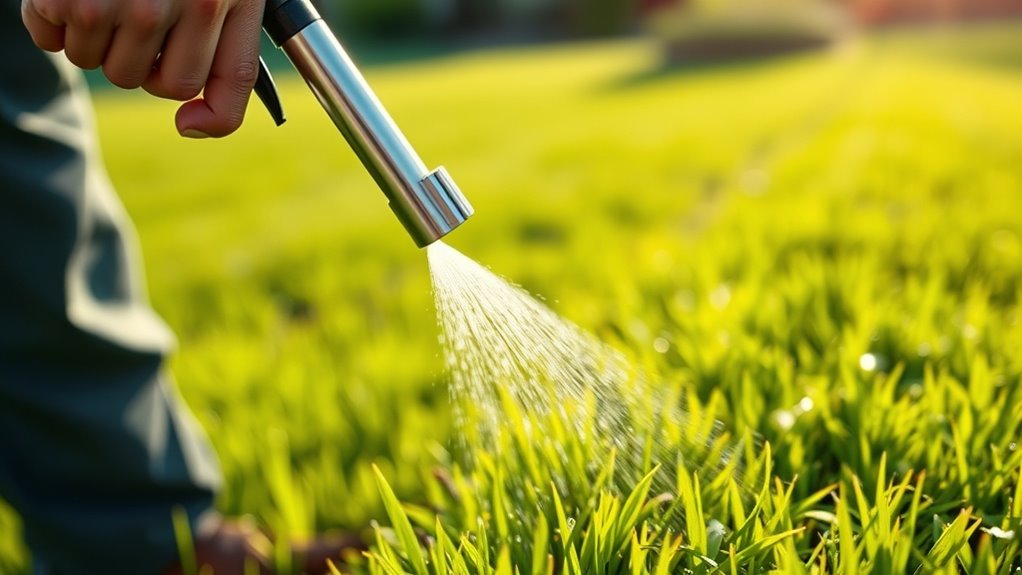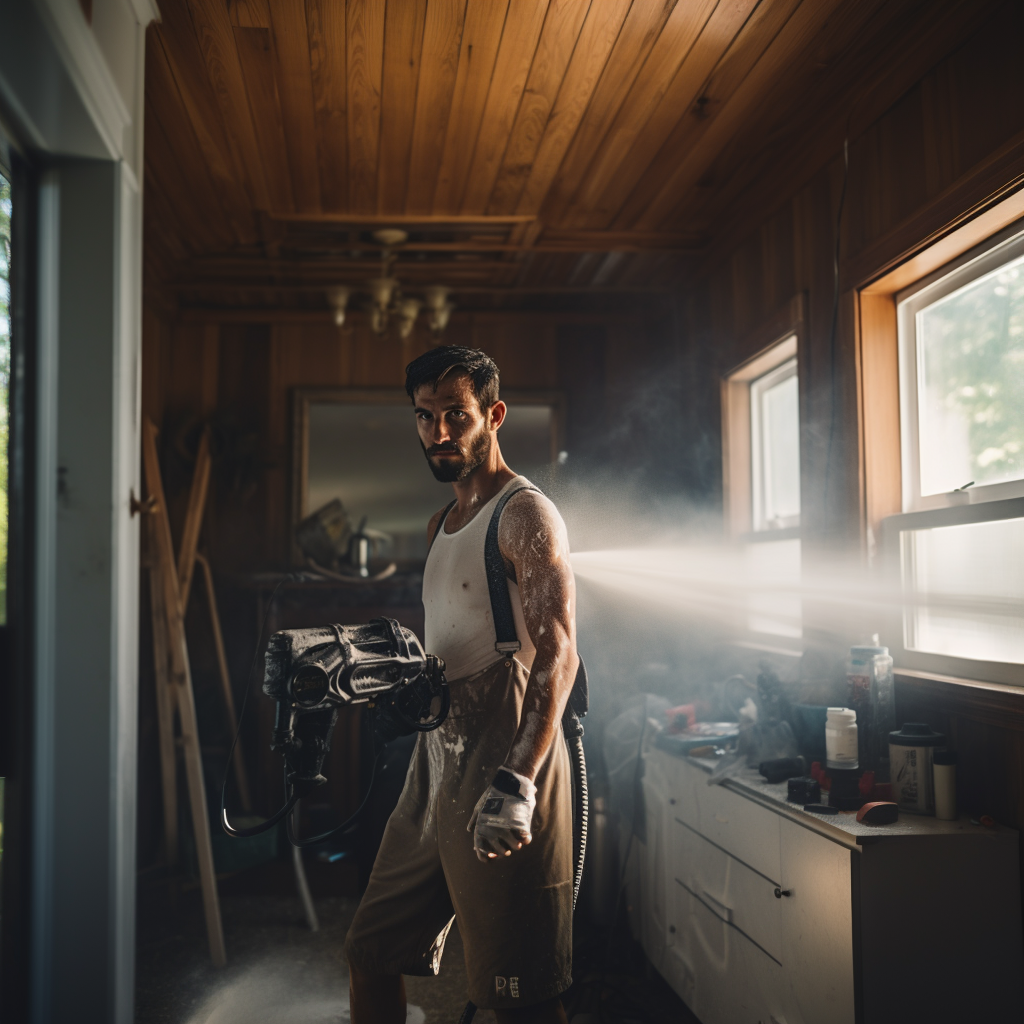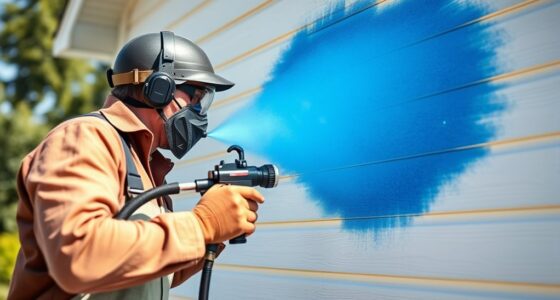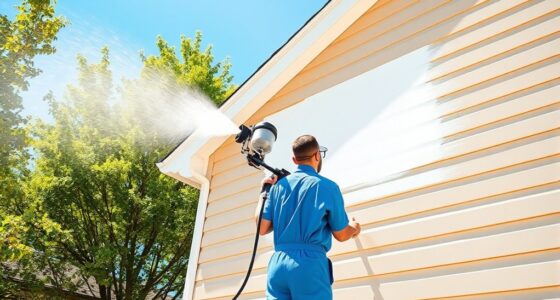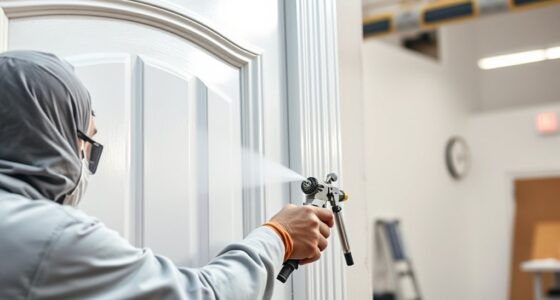To achieve precise edges with a sprayer, you need to calibrate your equipment for consistent flow and spray patterns, ensuring clean lines. Use a steady hand, keep the nozzle at a consistent height and angle, and maintain a steady pace along borders. Focusing on detail and using the correct pressure settings help create sharp, professional-looking edges. For more tips on perfecting your technique and equipment setup, continue exploring best practices for edging with a sprayer.
Key Takeaways
- Use a steady hand, consistent height, and angle to create sharp, clean borders during edging and cutting in.
- Calibrate and inspect the sprayer regularly for uniform spray pattern and accurate application.
- Match nozzle size and pressure to the task, utilizing adjustable controls for precise edge work.
- Maintain a steady pace and consistent distance from surfaces to ensure even, professional results.
- Keep equipment clean and properly maintained to prevent clogs, contamination, and uneven coverage.
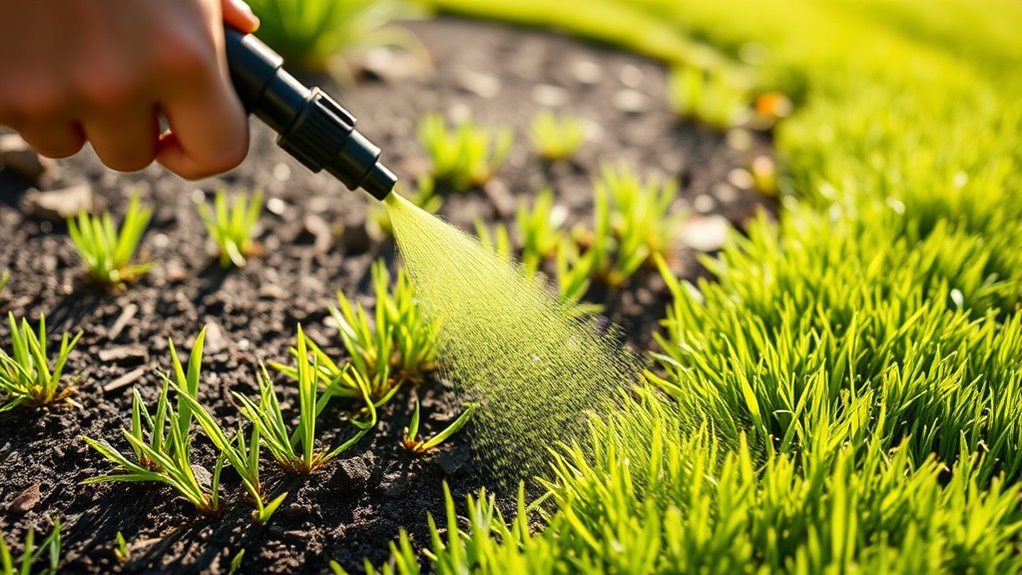
Edge spraying and cutting in with a sprayer are vital techniques for achieving clean, precise borders in your landscaping or gardening projects. When you focus on these precision techniques, you guarantee your work looks professional and neat. The key to mastering this skill lies in proper equipment calibration. Before you begin, take the time to calibrate your sprayer correctly. This step guarantees that the spray pattern and flow rate are consistent, reducing the chances of over-application or missed spots. Accurate calibration means you can confidently move along your borders, knowing the coverage will be even and controlled.
As you prepare your equipment, check the nozzle size and pressure settings to match the specific task. For edging, a finer spray helps create sharp, defined lines without spreading onto unwanted areas. Regularly inspect and clean your nozzles to prevent clogs and uneven spray patterns. When you start spraying, maintain a steady pace and consistent distance from the surface. This consistency is vital to achieving a clean edge, especially when working along curves or borders. Using a sprayer with adjustable flow control allows you to fine-tune your application as needed, giving you greater control over the result. Proper equipment calibration is essential for consistent and professional results.
Cutting in with a sprayer requires a steady hand and a focus on detail. Use a narrow spray pattern to carefully follow the border, keeping your nozzle at a consistent height and angle. This helps prevent overspray and ensures that the paint or treatment stays confined to the intended area. If you’re working with multiple colors or treatments, clean your equipment thoroughly between uses to avoid cross-contamination. When done correctly, these precise techniques will produce sharp, professional-looking edges that enhance the overall appearance of your landscape.
Frequently Asked Questions
What Safety Gear Is Recommended for Edge Spraying?
You should wear protective clothing, including long sleeves, pants, and gloves, to prevent skin contact with chemicals. Eye protection, such as goggles or safety glasses, is essential to shield your eyes from spray drift. A respirator or mask can also be helpful if fumes are present. Always check the product label for specific safety recommendations and verify your gear fits properly to stay protected throughout the spraying process.
How Do I Prevent Overspray During Precise Edging?
To prevent overspray during precise edging, you should first guarantee your sprayer is properly calibrated, which helps control spray patterns and flow. Keep your paint at the right consistency—thinner paint reduces drips and overspray. Use painter’s tape along edges to create clean lines, and hold the sprayer at a consistent distance. Slow, steady movements also improve accuracy, giving you sharp edges without mess.
What Types of Nozzles Are Best for Cutting In?
For cutting in, you’ll want nozzles with precise spray patterns, like conical or fan nozzles, to guarantee clean edges. Opt for nozzles made from durable materials like stainless steel or brass, which resist wear and clogging. These nozzle types give you better control, reduce overspray, and provide consistent application, making your edging sharp and professional-looking. Always choose nozzles suited to your sprayer’s pressure and the task at hand.
How Do Weather Conditions Affect Spraying Accuracy?
Imagine your spray as a delicate dance—weather conditions can throw it off balance. Wind drift pushes your spray off course, leading to uneven coverage, while high humidity causes droplets to cling, reducing precision. To maintain accuracy, you need calm, dry conditions and moderate humidity. When weather’s unpredictable, consider adjusting your spray timing or equipment to minimize these effects, ensuring your work stays sharp and clean.
Can I Use a Sprayer for Both Residential and Commercial Projects?
Yes, you can use a sprayer for both residential and commercial projects. Just make certain you choose the right tools, like multi-purpose sprayers and professional-grade equipment, to handle different scales and materials. These versatile sprayers give you the flexibility to switch between small, detailed jobs and larger, more demanding tasks efficiently. Always select equipment suited to your project size and complexity for best results and durability.
Conclusion
Now that you’ve learned the art of edge spraying and cutting in with a sprayer, you’re ready to achieve a polished look with ease. With a steady hand and a bit of patience, you’ll find the process becomes almost meditative, guiding your brush along clean lines and gentle curves. So, trust your skills and enjoy the subtle dance of precision—each careful stroke brings you closer to that flawless finish you’re aiming for.
Franz came aboard the Paint Sprayer Zone team with a background in both journalism and home renovation. His articulate writing style, combined with a passion for DIY projects, makes him an invaluable asset. Franz has a knack for breaking down technical jargon into easy-to-understand content, ensuring that even the most novice of readers can grasp the complexities of paint sprayers.
